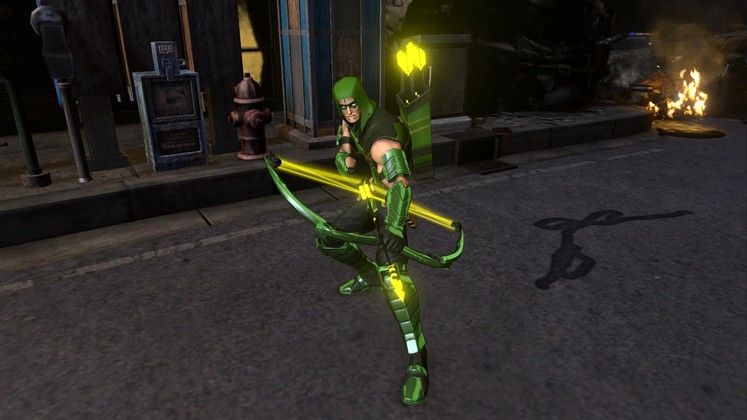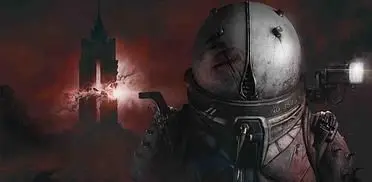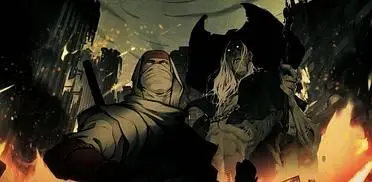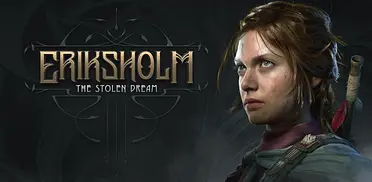You notice this as soon as you jump into a match and start hitting stuff. Although monster-grinding is a part of the game, it's a little less time-consuming than in other MOBAs. The main difference is that you no longer have to get the last hit to earn experience from killing them – you still can do it the old-fashioned way if you wish, but destroyed enemies also drop tokens that you can snap up. The developers want super-hero brawls to be the main draw, not worrying about who killed the minion.
 |
| Green Arrow poses for the camera, the big show-off. |
And those work very well. There's the usual variety of heroes types; support, tanks, damage dealers. All of them have four special powers which you've got to time just right or people on your team will shout at you. I played the robotic Mecha-Superman, a Michael Bay wet-dream with a giant pneumatic drill on the end of his arm. There was a real weight to his attacks, lots of satisfying sound effects and feedback from each swing.
Obviously, given the concept of the game, there's a bucketload of other colourful heroes from various alternative universes. If you want you can play boring vanilla Batman, but if you've got style? Plump for the demonic Nightmare Batman. Some of the designs are unique to the game, and they're really great. There's a post-apocalyptic Atomic world, and the afore-mentioned Mecha world, featuring mutants and giant robots respectively. The multiple universe concept and that rich DC heritage is a huge boon, and I'll be interested in seeing how the already intriguing roster develops over time.
In Infinite Crisis each character gets two special so-called Stolen Superpowers, chosen from a wide pool before the game, which give you a couple of extra options in battle. These included a temporary invulnerability shield, speed boosts and the like. If you've played League of Legends, they're basically the Infinite Crisis version of Summoner Spells. Mecha-Supes had super-strength, which meant I could fling environmental objects about at will, usually straight over the head of an enemy firing arrow after arrow into my stupid metal head. Thrown environmental projectiles do percentage damage, so they're always dangerous no matter the stage of the game. Turbine are promising that this ability to destroy and interact with the levels has a real effect on the way a given match plays out; taking out certain objects might open up a short-cut to an enemy tower, for example.
 |
| Superhero powers are universally pretty fun to use. If you can get your timing and aim right |
Other than the throwing of rocks, cars and bins, combat remains similar to that in other MOBAs. Strategy and timing are essential. I had this rock wall move that was meant to be used to trap escaping enemies for a couple of seconds so they could be finished off. Unfortunately I spent most of the time plonking it down in front of my long-suffering team while the intruder scampered away. Alongside these battlefield control moves you get the traditional mix of light attacks and your ultra, a devastating finisher that hits obscenely hard but takes an age to recharge. It was hard to get a feel for balance in such a short session (and also because my team was thoroughly humiliated), but there wasn't anyone that stood out as being noticeably over-powered.
Item shopping is present and correct, too. An hour or so was far too short a time to get a real feel for the complexities of the item system, especially when you're in the middle of a depressingly one-sided match, but there's your typical mix of stat-buffing goodies that can be bought and equipped once you've grounded out enough experience. There's no item crafting or recipes, you just find an item that fits your character role and slot it in. You can then keep upgrading it over the course of the game for further bonuses, or buy a new item to fill one of your six slots.
The map I played was Gotham Divided, a tri-lane (three routes of attack) half-and-half mix of the Gotham by Gaslight steampunk setting and the core DC universe separated into two zones. The setup wasn't radically different from other MOBAs; you've got around ten defence towers for each side, a super-powerful monster mob in the middle that can be fought for a huge chunk of bonus XP, and various other monsters scattered around to defeat and grind levels. It played reasonably slowly, with lots of skirmishes in the first half before the real action started.
 |
| Don't laugh at Aquaman or he'll spear you. |
There's clearly an overall attempt to strip away some of the complexity of the genre, making it more accessible to newcomers while still remaining deep enough that the hardcore players will get what they want out of the game too. Largely, I think it's an attempt that's been successful.
The true judgement of Infinite Crisis will only happen when the hardcore players get their hands on the finished product, of course, but right now it looks like a contender. I'm about as far from a decent MOBA player as you can possibly get, but I enjoyed by brief time with the game. Apart from all those times where I was being humiliated by better players, obviously. It feels more action-orientated than other MOBAs, more about the hero on hero fisticuffs than endlessly grinding enemy mobs. Although it's still devilishly unforgiving when you're faced with skilled players, it seems much simpler to get a basic hold on than something like DOTA. The IP is also a big draw, and the heroes are all cool and colourful, with some really inventive designs. I'd imagine that DOTA2 and League of Legends will have some serious competition when the game hits later this year. The game's open beta starts March 14, so you'll get to try it out for yourselves soon enough.
Most anticipated feature: There's loads of great looking characters, only a couple of which I got to try. Need to rectify that.


.webp)

